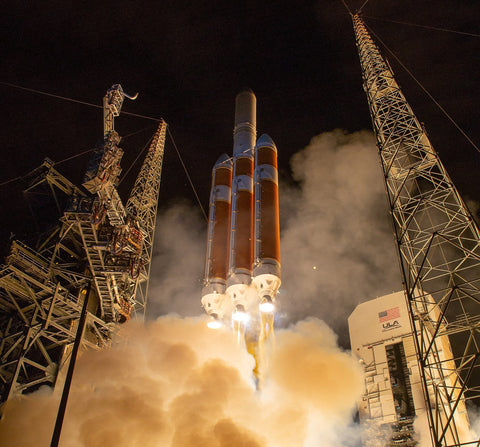Our sun, a seemingly constant presence in our lives, holds within it a dynamic and sometimes volatile nature. Solar storms, with their potential to disrupt communication systems, satellites, and even power grids on Earth, pose a significant threat to our modern way of life. To better understand and predict these solar storms, NASA's Parker Solar Probe was launched on a daring mission to touch the sun. In this blog post, we explore the invaluable contributions of the Parker Solar Probe to Earth's safety by studying solar storms and space weather.
The Parker Solar Probe: A Daring Mission
Probing the Sun's Atmosphere: Launched in 2018, the Parker Solar Probe was designed to get closer to the sun than any spacecraft before it. Its mission is to study the sun's outer atmosphere, known as the corona.
A Triple-Flame Shield: To withstand the extreme conditions near the sun, the probe is equipped with a cutting-edge heat shield that can endure temperatures exceeding 2,500 degrees Fahrenheit (about 1,377 degrees Celsius).
Studying Solar Storms
Coronal Mass Ejections (CMEs): Solar storms, often triggered by CMEs, release massive amounts of solar material into space. When directed toward Earth, they can cause geomagnetic storms with significant impacts.
Understanding Origins: The Parker Solar Probe provides critical data about the formation and propagation of CMEs, enabling scientists to better understand their origins and behavior.
Predicting Space Weather
Space Weather Impacts: Solar storms can disrupt GPS signals, interfere with radio communication, and even damage satellites in Earth's orbit. Predicting space weather is crucial for mitigating these impacts.
Real-time Data: The probe's instruments send back real-time data on solar wind, magnetic fields, and energetic particles, which are essential for forecasting space weather and issuing warnings.
Earth's Safety Net
Preventing Power Grid Damage: By studying solar storms, the Parker Solar Probe contributes to preventing power grid failures that could result from geomagnetic disturbances.
Protecting Astronauts: Space agencies like NASA use space weather forecasts to protect astronauts on space missions, ensuring their safety from harmful solar radiation.
Collaboration and Progress
Global Cooperation: International space agencies and scientific organizations collaborate to monitor and study space weather, with data from the Parker Solar Probe enriching these efforts.
Continual Discoveries: The probe continues to make groundbreaking discoveries, expanding our knowledge of the sun and its influence on our solar system.
The Parker Solar Probe's daring mission to touch the sun represents a giant leap in our understanding of solar storms and space weather. Its contributions to Earth's safety cannot be overstated, as it equips scientists and space agencies with the knowledge and tools needed to predict and mitigate the impacts of solar storms.
As we continue to rely on technology and space-based systems in our daily lives, the research conducted by the Parker Solar Probe serves as a vital safety net, protecting our communication networks, power grids, and space missions from the unpredictable forces of the sun. With each new discovery, we move closer to a future where space weather predictions are even more accurate, and the safety of our world is assured in the face of solar storms.






